Home>Garden Essentials>Garden Storage>Vegetable Garden Trellis Ideas: 18 Ways To Max Your Harvest
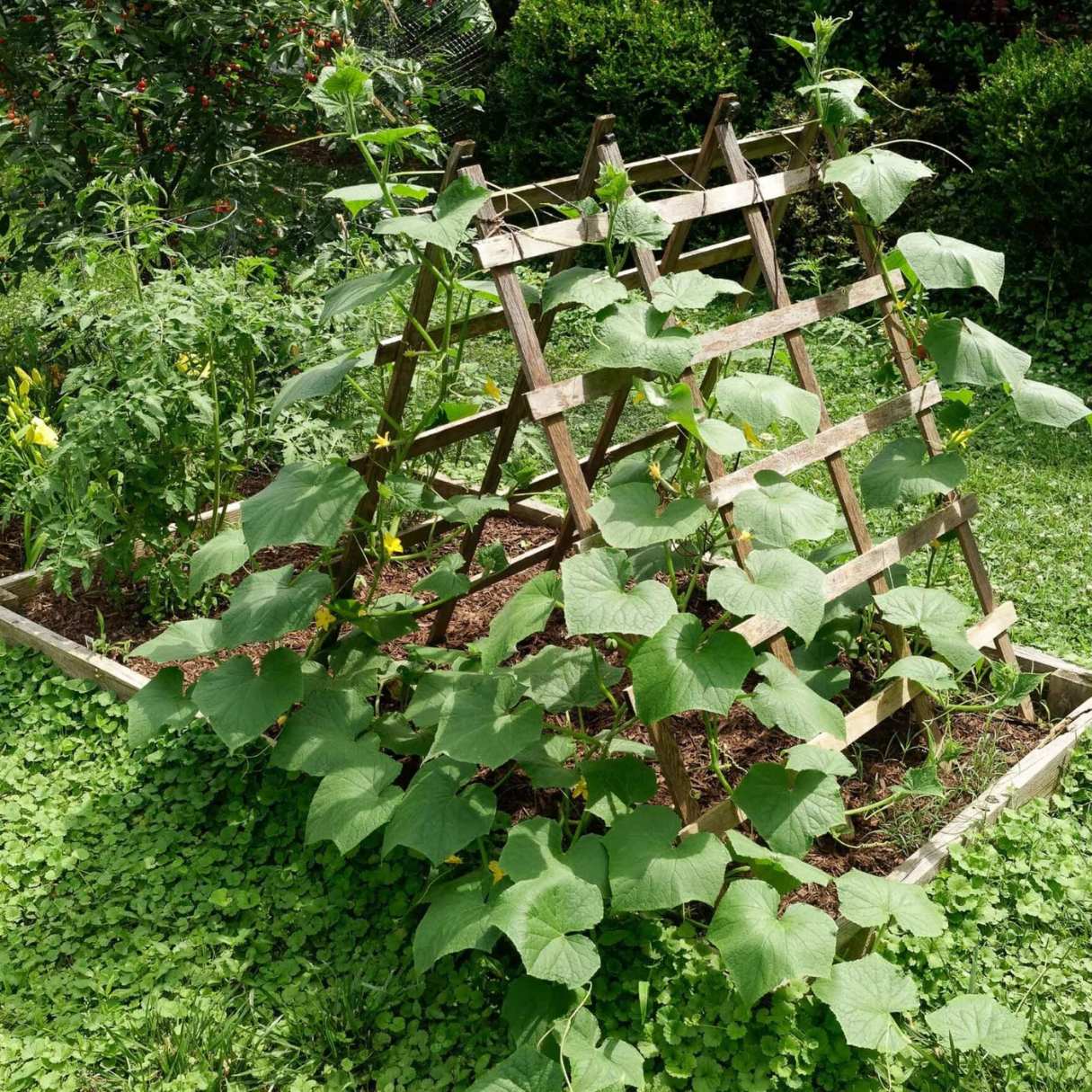

Garden Storage
Vegetable Garden Trellis Ideas: 18 Ways To Max Your Harvest
Modified: February 26, 2024
Looking for ways to maximize your harvest and storage in your vegetable garden? Check out these 18 trellis ideas for a bountiful yield.
(Many of the links in this article redirect to a specific reviewed product. Your purchase of these products through affiliate links helps to generate commission for Storables.com, at no extra cost. Learn more)
Introduction
Welcome to our comprehensive guide on vegetable garden trellis ideas! If you’re looking to maximize your harvest and make the most of your garden space, trellises are the way to go. A trellis is a structure that supports climbing plants, allowing them to grow vertically and saving valuable ground space.
In this article, we’ll explore 18 different trellis ideas that you can use in your vegetable garden. From simple structures to more elaborate designs, there’s a trellis option for every gardener and every space.
Why use a trellis in your vegetable garden? There are multiple benefits to growing plants vertically. First and foremost, it optimizes the use of space. By training plants to grow upwards instead of sprawling on the ground, you can grow more plants in a smaller area.
Vertical gardening also improves air circulation around the plants, reducing the risk of fungal diseases. It can also make harvesting easier as the fruits and vegetables are more accessible at eye level.
Additionally, trellises can add visual interest to your garden. They can act as a focal point, enhance the overall aesthetics, and create a sense of structure and organization.
Now let’s dive into the different vegetable garden trellis ideas that you can try in your own garden!
Key Takeaways:
- Maximize your garden space and improve plant health by incorporating trellises. From versatile vertical systems to specialized designs, trellises offer practicality, visual appeal, and increased productivity for your vegetable garden.
- Transform your garden with trellises, optimizing space, simplifying maintenance, and enhancing aesthetics. With the right trellis, your climbing plants will thrive, leading to a bountiful and visually stunning garden.
Vertical Trellis Systems
Vertical trellis systems are a popular and effective way to maximize the use of space in your vegetable garden. These systems utilize sturdy structures that allow plants to grow upwards, taking advantage of vertical space.
One common type of vertical trellis system is the stake and string method. It involves driving stakes into the ground at regular intervals and stretching string or wire between them at various heights. Plants such as tomatoes, cucumbers, and beans can then be trained to grow up the strings, providing support and preventing them from sprawling on the ground.
Another vertical trellis system is the cage method, particularly useful for tomato plants. Tomato cages are cone-shaped wire structures that surround the plant, providing support and allowing it to grow vertically. As the tomato plant grows, you can gently guide the branches through the openings in the cage, encouraging upward growth.
If you’re looking for a more modular and versatile trellis system, consider using a trellis netting. Trellis netting is made of durable nylon or plastic material and can be stretched horizontally or vertically between stakes or support beams. The netting provides a grid structure for plants to climb, supporting them as they grow.
In addition to these trellis systems, there are many DIY options available. You can repurpose old ladders, pallets, or even unused doors as vertical trellises. By leaning these structures against a wall or fence, you create an instant climbing frame for your plants.
When selecting a vertical trellis system, remember to consider the weight and growth habits of your plants. Ensure that the structure is sturdy enough to support the plants as they grow and bear fruit. Additionally, provide regular maintenance by tying or securing the plants to the trellis to prevent them from falling or getting damaged.
Vertical trellis systems offer a practical and space-saving solution for growing climbing vegetables in your garden. By utilizing these systems, you can make the most of your available space while providing necessary support for your plants.
A-Frame Trellis
The A-Frame Trellis is a simple yet effective design that provides excellent support for climbing plants. As the name suggests, this trellis resembles the shape of the letter “A”, with two sloping sides meeting at the top.
To construct an A-Frame Trellis, you will need two wooden or metal posts of equal length and a sturdy crossbeam. The posts should be inserted into the ground at an angle, forming the sides of the A. The crossbeam is then secured to the top of the posts, creating the ridge of the A-frame.
The A-Frame Trellis works well for vining vegetables such as cucumbers, melons, and squash. The plants can be trained to climb up the sloping sides of the trellis, utilizing the vertical space and minimizing ground space usage.
One advantage of the A-Frame Trellis is its ease of construction and versatility. You can adjust the height and width of the trellis to suit your needs and the size of your plants. Additionally, this trellis can be easily disassembled and stored during the offseason, making it a convenient option for gardeners with limited space.
When using the A-Frame Trellis, ensure that the structure is stable and firmly anchored into the ground to withstand the weight of the plants as they grow. You may also need to secure the vines to the trellis using garden twine or clips to prevent them from falling or breaking as they become heavier.
The A-Frame Trellis not only provides support for your climbing plants, but it also adds visual interest to your garden. The triangular shape of the trellis creates a focal point and can enhance the overall aesthetics of your vegetable garden.
Whether you’re a beginner gardener or an experienced enthusiast, the A-Frame Trellis is an excellent choice for your climbing vegetables. Its simplicity, adjustability, and functionality make it a popular option for many gardeners.
Teepee Trellis
The Teepee Trellis is a charming and functional option for supporting climbing plants in your vegetable garden. This trellis design mimics the shape of a teepee or a tipi with its conical structure.
To create a Teepee Trellis, you’ll need several long and sturdy poles. Bamboo poles are a popular choice due to their strength and flexibility. Start by gathering the poles together at one end, forming a bundle. Then, spread the other ends out in a circular pattern, creating the base of the teepee. Secure the poles at the top with twine or wire, allowing them to lean towards the center, creating the conical shape.
The Teepee Trellis provides a vertical climbing structure that is ideal for plants like beans, peas, and morning glory. As the plants grow, they will naturally climb up the poles, utilizing the teepee structure for support.
One advantage of the Teepee Trellis is its versatility. You can easily adjust the size of the trellis by adding or removing poles, depending on the number of plants you’re growing. This flexibility also allows for easy access to the plants for maintenance and harvesting.
The Teepee Trellis not only serves as a functional support for climbing plants but also adds an aesthetic appeal to your garden. The teepee shape creates a visually pleasing focal point and adds a touch of whimsy to your vegetable garden landscape.
When constructing a Teepee Trellis, choose poles that are tall enough to accommodate the full height of the plants when they reach maturity. Additionally, make sure the poles are inserted securely into the ground to prevent the trellis from toppling over during windy conditions.
You may also consider adding additional support to the Teepee Trellis by tying garden twine or string horizontally around the poles at different heights. This will provide extra stability and further support for the climbing plants.
The Teepee Trellis is not only a functional and practical option for supporting climbing plants but also a visually appealing addition to your vegetable garden. Consider incorporating this charming trellis design to create a unique and captivating garden space.
Ladder Trellis
The ladder trellis is a creative and unique way to support climbing plants in your vegetable garden. It repurposes an old ladder to create a vertical structure that plants can climb and grow on.
To create a ladder trellis, you’ll need an old wooden ladder that is sturdy enough to support the weight of the plants. You can use a ladder of any size, depending on the space you have available and the number of plants you want to support.
Place the ladder in your desired location in the garden, ensuring that it is stable and securely positioned. You can lean it against a wall or fence for added stability. If needed, you can also secure the ladder by hammering stakes into the ground and tying the ladder to them with garden twine or wire.
The rungs of the ladder provide horizontal support for the plants to climb. Vining vegetables like cucumbers, pole beans, and even small-fruited tomatoes can be trained to grow up the rungs of the ladder. As the plants climb, gently guide them towards the rungs, ensuring they have sufficient support for stability.
The ladder trellis not only serves a practical purpose but also adds a rustic and decorative element to your garden. The weathered look of the ladder can bring a charming and nostalgic aesthetic to your vegetable garden, creating a unique focal point that catches the eye.
One advantage of the ladder trellis is its versatility. You can easily adjust the height and angle of the ladder based on the growth of the plants and your specific gardening needs. Additionally, you can move the ladder trellis around your garden to provide support where it is needed most or to accommodate different plant varieties throughout the growing season.
When using a ladder trellis, ensure that the ladder is secure and stable, especially if your plants become heavy with fruits or vegetables. Regularly check the ladder for any signs of wear or damage and make any necessary repairs to maintain its functionality and safety.
The ladder trellis offers a creative and whimsical solution for vertical gardening. By repurposing an old ladder, you not only provide support for your climbing plants but also showcase your resourcefulness and add a touch of personality to your garden space.
Obelisk Trellis
The obelisk trellis is a stunning and elegant option for supporting climbing plants in your vegetable garden. Resembling a tall tower or pyramid shape, this trellis adds vertical interest and a touch of sophistication to your garden space.
To create an obelisk trellis, you will need four long wooden or metal poles of equal length. The poles are typically joined together at the top, forming a pyramid shape. You can secure the poles together using screws, nails, or sturdy twine. The base of the obelisk can be inserted into the ground for stability.
The obelisk trellis is suitable for a variety of climbing plants, including flowering vines, beans, and small-fruited vegetables. The structure provides ample vertical space for the plants to grow and climb, utilizing the trellis for support.
One advantage of the obelisk trellis is its versatility. The size of the trellis can be customized to suit your garden space and the needs of your plants. You can adjust the height and width of the obelisk to accommodate the growth of your plants and allow for easy access and maintenance.
The obelisk trellis not only provides practical support for your plants, but it also adds a vertical focal point in your garden. Its striking shape and presence can enhance the aesthetics of your garden and create a visually appealing centerpiece.
When constructing an obelisk trellis, ensure that the structure is stable and firmly planted in the ground. The weight of the plants as they grow can put stress on the trellis, so it’s essential to ensure that it can withstand wind and other environmental factors.
For added stability, you can anchor the base of the obelisk with stakes or add decorative elements such as rocks or containers filled with soil around the base. This will help keep the trellis steady and prevent it from toppling over.
The obelisk trellis is an excellent choice for gardeners looking to add a touch of elegance and vertical structure to their vegetable garden. It not only provides support for climbing plants but also creates a visually appealing focal point that will impress visitors and bring a sense of beauty to your outdoor space.
Tripod Trellis
The tripod trellis is a simple yet effective design that provides support for climbing plants in your vegetable garden. As the name suggests, this trellis features a tripod structure made of three poles and offers a sturdy and stable framework for plants to climb.
To create a tripod trellis, you’ll need three long and sturdy poles of equal length. Bamboo or wooden poles are commonly used due to their strength and availability. Begin by gathering the poles together at the top, then spread the other ends out in a fan-like pattern, forming a triangle shape. Secure the poles at the top with twine, wire, or screws to ensure stability.
The tripod trellis is ideal for supporting vining vegetables such as beans, peas, and even cucumbers. As the plants grow, they will naturally climb up the poles of the tripod, utilizing the structure for support.
One of the advantages of the tripod trellis is its simplicity and ease of construction. It requires minimal materials and can be set up in no time. Additionally, if you have limited space in your garden, the tripod trellis can be an excellent option as it takes up less ground space while still providing vertical support for your plants.
When using a tripod trellis, make sure to insert the poles into the ground firmly to ensure stability and prevent the trellis from tipping over. You can also consider adding crossbars or horizontal support near the midway point for added strength.
Another benefit of the tripod trellis is its versatility. You can adjust the height and width of the trellis by choosing longer or shorter poles, depending on the needs of your plants. This flexibility allows you to accommodate different plant varieties and adjust the trellis to suit your gardening preferences.
The tripod trellis not only provides functional support for your climbing plants but also adds an interesting visual element to your garden. The geometric shape of the tripod creates a pleasing aesthetic and can serve as a focal point in your vegetable garden.
If you’re looking for a budget-friendly and easy-to-build trellis option, consider constructing a tripod trellis. Its simple yet sturdy design makes it a reliable choice for supporting climbing plants, ensuring they grow vertically and optimize your garden space.
Bamboo Trellis
The bamboo trellis is a versatile and eco-friendly option for supporting climbing plants in your vegetable garden. Bamboo is a durable and sustainable material that provides a natural and rustic look to your garden space.
To create a bamboo trellis, you’ll need bamboo poles of various lengths, depending on the size and height of the trellis you desire. Choose thick, sturdy poles for the main structure and thinner poles for crosspieces or connections. Secure the bamboo poles together using garden twine, wire, or zip ties.
Bamboo trellises can take on various shapes and designs, depending on your preferences and the needs of your plants. You can construct a simple A-frame trellis, a horizontal trellis, or even create unique geometric shapes by cutting and arranging the bamboo poles.
The bamboo trellis is suitable for a wide range of climbing plants, including beans, peas, cucumbers, and many flowering vines. As the plants grow, they will naturally twine around the bamboo poles, using them for support and stability.
One of the advantages of the bamboo trellis is its durability and weather resistance. Bamboo is known for its strength and can withstand outdoor elements, making it a long-lasting option for your garden trellis needs.
Another benefit of the bamboo trellis is its aesthetic appeal. The natural beauty and texture of the bamboo add an organic and rustic charm to your garden, creating a visually pleasing focal point. It effortlessly blends with the surrounding greenery and provides an eco-friendly touch to your outdoor space.
When working with bamboo, it’s important to choose poles that are straight and free from any cracks or signs of damage. Secure the connections between the bamboo poles tightly to ensure a sturdy structure. Regularly inspect the trellis for any signs of wear or weakness and replace any damaged bamboo poles promptly.
The bamboo trellis can be a cost-effective and sustainable option for your vegetable garden. It offers both functionality and aesthetics while utilizing natural materials. Plus, bamboo is a renewable resource, making it an environmentally friendly choice.
Consider incorporating a bamboo trellis in your garden to enhance plant growth and add a touch of natural beauty to your outdoor space.
Cattle Panel Trellis
The cattle panel trellis is a sturdy and durable option that provides excellent support for climbing plants in your vegetable garden. It is made from a strong metal wire panel, originally designed for enclosing livestock but repurposed for gardening purposes.
To create a cattle panel trellis, you will need a cattle panel, which is a large rectangular wire mesh panel with evenly spaced vertical and horizontal wires. The panel can be easily purchased from farm supply stores or online. Depending on the size of your garden, you can choose a panel that fits your needs.
Start by positioning the cattle panel vertically in your desired location in the garden. You can choose to attach it to a fence or secure it to posts driven into the ground. Make sure the panel is stable and firmly anchored to provide support for the climbing plants.
Plants such as cucumbers, melons, tomatoes, and beans can be trained to grow up the cattle panel trellis. As the plants grow, they will naturally attach themselves to the wire mesh and climb upwards, utilizing the panel for support.
One of the advantages of the cattle panel trellis is its strength and durability. The wire panel is sturdy enough to support the weight of heavy fruit-bearing plants, making it an ideal choice for larger, more bushy varieties. It can withstand the elements and last for multiple growing seasons.
Another benefit of the cattle panel trellis is its versatility. The wide spacing between the wires allows for easy access to the plants for maintenance, pruning, and harvesting. You can also adjust the height of the panel by cutting it to size if needed.
When setting up a cattle panel trellis, take safety precautions by wearing gloves and using wire cutters or hog ring pliers to trim and bend any sharp edges. Secure the panel to the posts or fence using wire or zip ties, ensuring a tight and stable connection.
The cattle panel trellis can be an effective solution for supporting climbing plants, particularly those with heavy growth or fruits. It offers durability, longevity, and ample space for plants to thrive and climb. Plus, it adds an industrial and functional element to your garden space.
Consider using a cattle panel trellis to elevate your gardening game and provide sturdy support for your climbing vegetables.
Garden Arch Trellis
The garden arch trellis is a beautiful and enchanting option for supporting climbing plants in your vegetable garden. This trellis design adds a touch of elegance and creates a stunning entryway or focal point in your outdoor space.
To create a garden arch trellis, you will need two sturdy metal or wooden arches. These arches can be either freestanding or attached to a wall or fence for added stability. The arches should be positioned opposite each other and arched to form a graceful entryway.
Depending on the size and strength of your arches, you may need to secure them by inserting the legs into the ground or using stakes for added stability. Once the arches are in place, you can train climbing plants to grow up and over the arches, creating a stunning display of foliage and flowers.
The garden arch trellis is perfect for vining vegetables such as beans, peas, and cucumbers, as well as flowering vines like morning glories or sweet peas. The arches provide a beautiful vertical structure for the plants to climb, adding height and visual interest to your garden.
One of the advantages of the garden arch trellis is its aesthetic appeal. It creates a visually striking element in your garden, framing a pathway or creating a focal point. The arches can add a touch of romance and whimsy to your outdoor space, enhancing the overall ambiance.
Additionally, the garden arch trellis offers functionality beyond its beauty. As the plants climb and cover the arches, they provide shade and a sense of privacy. You can even train edible flowers or scented herbs to grow on the arches, enhancing the sensory experience of your garden.
When selecting a garden arch trellis, choose materials that are sturdy and weather-resistant, as they will be exposed to outdoor elements. Consider opting for materials such as wrought iron, galvanized metal, or rot-resistant wood for lasting durability.
Regular maintenance is important for the garden arch trellis. Prune and train the plants to grow along the arches to maintain the desired shape and appearance. Regularly inspect the structure for any signs of damage or weakness, and make any necessary repairs to ensure its stability.
The garden arch trellis is a stunning addition to any vegetable garden. Its beauty, functionality, and ability to elevate your outdoor space make it a popular choice among gardeners. Consider incorporating a garden arch trellis to add a touch of elegance and enchantment to your vegetable garden.
Consider using a sturdy trellis for heavy crops like melons and squash to support their weight and prevent damage to the plants. This will help maximize your harvest and keep your garden organized.
Fence Trellis
The fence trellis is a practical and space-saving option for supporting climbing plants in your vegetable garden. By utilizing your existing fence as a trellis, you can maximize your vertical growing space and create a seamless integration between the plants and the surrounding environment.
To create a fence trellis, you’ll need a sturdy fence or a section of your existing fence that is suitable for supporting the weight of climbing plants. The fence should be made of durable material, such as wood or metal, and securely anchored into the ground or attached to solid posts.
Train climbing plants, such as beans, peas, or vine vegetables, to grow up the fence by providing them with support and tying them loosely to the fence using garden twine or soft plant ties. As the plants grow, they will latch onto the fence and use it as a natural support structure.
The fence trellis offers several advantages. Firstly, it makes efficient use of available space, allowing you to grow a variety of plants even in limited areas. Additionally, it provides a continuous and seamless support structure for your climbing plants, maintaining a cohesive and organized appearance in your garden.
Another benefit of the fence trellis is its versatility. You can adapt it to different plant heights and growth patterns by adjusting the positioning of the ties or adding additional support elements such as stakes or bamboo poles for added stability.
One important consideration when using a fence trellis is to ensure that the fence is sturdy enough to handle the weight and growth habit of your climbing plants. Regularly inspect the fence for any signs of weakness or damage, and reinforce or repair as necessary to maintain its structural integrity.
The fence trellis also provides the opportunity to combine different climbing plants on a single fence, creating a visually appealing and diverse garden. You can experiment with various plant combinations and textures to add interest and maximize productivity in your garden.
When installing a fence trellis, make sure to provide ample spacing between plants to allow for good air circulation and prevent overcrowding. This will help reduce the risk of disease and promote healthier growth.
The fence trellis is a practical and efficient solution for supporting climbing plants in your vegetable garden. By using your fence as a trellis, you can transform an existing structure into a vertical gardening space, expanding your planting opportunities and creating a harmonious garden backdrop.
Tomato Cage Trellis
The tomato cage trellis is a popular and effective option for supporting tomato plants in your vegetable garden. It provides sturdy support and helps keep the plants upright as they grow and produce fruit.
To create a tomato cage trellis, you’ll need tomato cages, which are cylindrical wire structures designed specifically for supporting tomato plants. Tomato cages are readily available at garden centers or can be made at home using wire mesh or sturdy metal rods.
Place the tomato cage over the young tomato plant, positioning it around the base of the plant. The cage should be tall enough to support the full height of the tomato plant when it reaches maturity. Gently guide the branches of the tomato plant into the openings of the cage as it grows, encouraging upward growth.
The tomato cage trellis offers several benefits. Firstly, it helps keep the tomato plants off the ground, reducing the risk of diseases and pests that thrive in soil. This elevation also makes it easier to monitor and harvest the tomatoes as they ripen.
Tomato cages provide excellent support for the heavy clusters of tomatoes that the plants produce. They help prevent the weight of the fruit from pulling the branches down, reducing the risk of breakage and ensuring better air circulation around the plant.
One advantage of the tomato cage trellis is its ease of use and versatility. The cages can be easily moved around the garden to adjust for spacing or sunlight requirements. After the growing season, they can be collapsed or stacked for compact storage.
When using a tomato cage trellis, make sure to secure the cage to the ground using stakes or by inserting the legs into the soil to provide stability. Tomatoes are known for their vigorous growth, so the trellis needs to be well anchored.
Additionally, prune the lower branches of the tomato plant to encourage vertical growth and to allow better air circulation. This will help prevent diseases and ensure healthier plants.
Tomato cages come in various sizes, so choose ones that are appropriate for your tomato varieties. Consider opting for tall and sturdy cages to accommodate indeterminate tomato plants that can grow quite tall.
The tomato cage trellis is a must-have for any tomato gardener. It provides excellent support, promotes healthier plants, and makes harvesting easier. Incorporate tomato cages into your garden to help your tomato plants thrive and produce abundant, delicious fruits.
String Trellis
The string trellis is a simple yet effective method for supporting climbing plants in your vegetable garden. It uses a series of strings or twines attached to supports to provide a vertical structure for plants to grow and cling onto.
To create a string trellis, you’ll need sturdy posts or stakes placed at regular intervals along the planting row. The posts should be inserted into the ground securely to provide stability. Attach strong strings or twines horizontally between the posts, leaving enough space for the plants to grow.
As the plants grow, gently guide the vines or branches along the strings, attaching them with soft garden twine or clips for support. This encourages the plants to grow upward and prevents them from sprawling on the ground.
The string trellis is particularly suitable for vegetables such as beans, peas, and cucumbers, as well as flowering vines like morning glories. The vertical structure created by the strings allows the plants to grow upwards, utilizing the trellis for support.
One advantage of the string trellis is its adaptability. You can easily customize the trellis to suit the specific needs of your garden and the plants you’re growing. Adjust the height and spacing of the strings as necessary to accommodate the growth habits of different plant varieties.
The string trellis also offers better air circulation around the plants, reducing the risk of fungal diseases. It allows sunlight to reach the lower parts of the plant, promoting healthy growth and fruit development.
Another benefit of the string trellis is its affordability and easy setup. It requires minimal materials and can be installed in a short amount of time. Plus, the strings can be easily adjusted or replaced if needed.
When using a string trellis, regularly check the tension of the strings and adjust as necessary to support the plants. Pruning and training the plants to grow along the strings will help maintain a neat and organized appearance and prevent overcrowding.
In addition to its functionality, the string trellis can add visual interest to your garden. The vertical growth of the plants along the strings creates an attractive and orderly pattern, enhancing the overall aesthetics of your vegetable garden.
If you’re looking for a versatile and affordable trellis option, consider implementing a string trellis in your garden. It provides excellent support for climbing plants and optimizes your growing space while adding a touch of elegance to your vegetable garden.
Wire Mesh Trellis
The wire mesh trellis is a durable and versatile option for supporting climbing plants in your vegetable garden. Made from sturdy metal wires, this trellis provides a strong and reliable framework for your plants to grow and thrive.
To create a wire mesh trellis, you’ll need a piece of wire mesh or fencing with small openings. The size of the wire mesh will depend on the type of plants you’re growing and the support needed. Secure the wire mesh to posts or attach it to a fence or wall, ensuring that it is taut and stable.
As the plants grow, train the vines or branches of climbing vegetables to weave through the openings of the wire mesh. This provides support and encourages vertical growth, preventing the plants from sprawling on the ground.
The wire mesh trellis is suitable for a variety of climbing plants, including tomatoes, cucumbers, beans, and peas. The sturdy structure allows for the weight of the plants and their fruits, providing stability and preventing breakage.
One advantage of the wire mesh trellis is its durability. It can withstand the elements and last for multiple growing seasons, making it a long-lasting investment for your garden. The wire mesh also offers excellent airflow and sunlight penetration, promoting healthy plant growth.
The wire mesh trellis is versatile, allowing you to adjust the height and shape as needed. It can be easily cut into different sizes to fit your garden space or specific plant requirements. This flexibility enables you to customize the trellis according to your garden layout and the growth habits of your plants.
Regular maintenance is essential for the wire mesh trellis. Check the structure periodically for any signs of rust or damage, and replace any worn or weakened sections to ensure its stability. Additionally, prune and train the plants as they grow, directing them along the wire mesh for optimal support.
In terms of aesthetics, the wire mesh trellis provides a clean and organized look to your garden. With plants growing neatly along the wires, it creates an appealing visual pattern that adds structure and beauty to your vegetable garden.
If you’re looking for a strong and reliable trellis option, consider using a wire mesh trellis in your garden. It provides excellent support for climbing plants, promotes healthier growth, and adds a touch of functionality and elegance to your outdoor space.
Pallet Trellis
The pallet trellis is a creative and budget-friendly option for supporting climbing plants in your vegetable garden. It repurposes old wooden pallets, giving them a new life as a functional and unique trellis structure.
To create a pallet trellis, you’ll need one or more wooden pallets that are in good condition. Choose pallets with sturdy wood slats and without any signs of rot or damage. The number of pallets you’ll need depends on the size and number of plants you wish to support.
Start by placing the pallets vertically in your garden, ensuring they are securely positioned. Depending on your preference, you can leave the pallets as they are or modify them by removing unnecessary planks or rearranging them to create larger gaps for plant growth and access.
Train climbing plants to grow up the pallet trellis by gently guiding the vines or branches to weave through the gaps between the slats. If needed, use garden twine or soft plant ties to secure the plants to the pallet to prevent them from sagging or falling.
The pallet trellis is suitable for a variety of climbing vegetables, including beans, peas, cucumbers, and small-fruited tomatoes. The vertical structure created by the pallets provides ample support for the plants to grow and ensures better air circulation around the foliage.
One of the advantages of the pallet trellis is its affordability and accessibility. Pallets are often available for free or at a low cost, making this trellis option a budget-friendly choice. Additionally, it allows you to repurpose materials that might otherwise go to waste.
Another benefit of the pallet trellis is its versatility. You can customize the trellis by painting or staining the pallets to match your garden aesthetic. Pallets can also be easily disassembled or rearranged if needed, giving you flexibility in adjusting the size and arrangement of the trellis.
When using pallets for a trellis, it’s important to reinforce their stability. Secure them by anchoring the bottom of the pallets into the ground or attaching them to stakes for additional support. Regularly inspect the pallets for any signs of damage or weakness and replace any unstable parts.
The pallet trellis not only serves its purpose as a functional support for climbing plants but also adds a rustic and artistic element to your garden. It showcases your creativity and resourcefulness while providing a unique and eye-catching focal point.
Consider using a pallet trellis in your garden to support your climbing vegetables and add a touch of eco-friendly charm to your outdoor space. It’s a sustainable and inventive way to transform discarded pallets into a functional and visually appealing trellis structure.
Cucumber Trellis
The cucumber trellis is a specific trellis design tailored to the needs of cucumber plants. Cucumbers are vining vegetables that can sprawl on the ground if left unsupported, which can lead to crowded plants and reduced air circulation. Using a cucumber trellis provides vertical support, improves plant health, and maximizes your garden space.
To create a cucumber trellis, you have several options based on the size of your garden and personal preference.
One method is to use a string or net trellis. Attach two tall stakes or posts on either side of the cucumber row, ensuring they are firmly secured in the ground. Then, string sturdy twine horizontally between the stakes, creating a web-like structure for the cucumber vines to climb.
Another option is to use a fence trellis. Install a fence or vertical grid structure behind your cucumber plants, ensuring it is tall enough to accommodate the full height of the cucumbers when they mature. As the cucumber vines grow, train them to climb the fence, gently guiding the tendrils to grip onto the structure.
Alternatively, you can use a trellis with individual vertical supports. Insert tall stakes or posts every few feet along the cucumber row and tie horizontal strings or wires between them. This allows the cucumber vines to weave through the supports as they grow.
One of the main benefits of using a cucumber trellis is that it saves precious garden space by allowing the cucumbers to grow vertically rather than sprawling across the ground. This is especially advantageous for gardeners with limited space or for those who want to cultivate multiple cucumber varieties.
A cucumber trellis also improves air circulation around the plants, reducing the risk of diseases caused by moisture buildup. Furthermore, it makes it easier to monitor the cucumbers for pests, diseases, and ripeness, as they are more accessible at eye level.
When constructing a cucumber trellis, consider the weight of the fully grown cucumbers. Ensure the trellis is sturdy and can support the load by using strong materials such as thick strings, wire, or robust fencing.
Regular maintenance is essential for a cucumber trellis. Train the vines to climb the trellis by gently guiding them during the initial stages of growth. Keep a close eye on the cucumbers as they develop and regularly harvest them to prevent overgrowth, which can strain the trellis structure.
A cucumber trellis not only helps your plants grow vertically, but also adds visual appeal to your garden. The climbing vines and dangling cucumbers create an inviting and abundant display.
Consider incorporating a cucumber trellis in your garden to optimize space, improve plant health, and increase your cucumber yield. With proper support, your cucumber plants will thrive, leading to a bountiful harvest of crisp and delicious cucumbers for your enjoyment.
Bean Trellis
A bean trellis is a must-have for anyone growing beans in their vegetable garden. Beans are climbing plants that require vertical support to grow and flourish. By providing a trellis specifically designed for beans, you can create an organized and efficient growing system while maximizing space in your garden.
There are several types of trellises suitable for beans, depending on your garden layout and personal preferences.
One popular option is the A-frame trellis. Construct two sturdy frames in the shape of the letter “A,” using wooden boards or metal poles. Position the frames at opposite ends of the row of beans, ensuring they are securely anchored in the ground. Then, connect the frames at the top with a crossbeam for added stability. As the bean plants grow, train them to climb up the trellis frames.
Another common method is using individual vertical supports such as stakes or bamboo poles. Place these supports every few feet along the bean row, ensuring they are adequately inserted into the ground. Attach horizontal strings or trellis netting between the supports to create a climbing framework for the bean plants.
When planning your bean trellis, consider the height of the bean plants and choose trellis structures that can accommodate their growth. Many bean varieties can reach several feet in height, so make sure your trellis provides adequate vertical space.
By utilizing a bean trellis, you provide several benefits to your plants and garden. First and foremost, it optimizes space by encouraging vertical growth, allowing you to grow more bean plants in a limited area. This is particularly advantageous for gardeners with small gardens.
A bean trellis also improves air circulation around the plants, reducing the risk of fungal diseases caused by excessive moisture. Furthermore, it makes it easier to harvest your beans as they hang down from the trellis, saving you from bending over or searching through tangled foliage on the ground.
Regular maintenance is crucial for a bean trellis. Train the bean vines to climb the trellis by gently guiding them during the initial stages of growth. Monitor the growth of the plants and regularly harvest the beans to prevent overgrowth, which can put stress on the trellis structure.
Lastly, consider the material and durability of your bean trellis. Choose materials that can withstand the weight of fully grown bean plants, such as strong strings, wire, or sturdy wooden or metal posts.
A bean trellis not only serves as a functional support but also adds visual appeal to your garden. The climbing bean vines and dangling bean pods create a lush and inviting display.
Whether you choose an A-frame trellis or individual vertical supports, incorporating a bean trellis in your garden will result in healthier plants and a more organized growing space. Enjoy a bountiful harvest of fresh and crisp beans, straight from your own garden.
Pea Trellis
A pea trellis is essential for growing peas in your vegetable garden. Peas are climbing plants that require support to grow vertically, maximize their productivity, and make harvesting easier. With a pea trellis in place, you can cultivate a thriving pea crop while optimizing space in your garden.
There are several trellis options suitable for peas, depending on your preference and garden layout.
One common choice is a teepee trellis. Use tall stakes or bamboo poles to create a tepee-like structure with the tops of the stakes or poles meeting and secured together. Space several stakes or poles evenly around the area where you’ll be planting your peas. As the pea plants grow, guide them to climb up the poles, supporting their tendrils around the structure.
Another option is a chicken wire trellis. Attach a piece of chicken wire or mesh fencing to stakes or a frame, ensuring it is securely anchored. Space the stakes or frames evenly along the pea row. The peas will happily climb and cling to the wire or mesh, utilizing it as support.
When planning your pea trellis, consider the height of the pea variety you are growing. Some peas tend to grow taller than others, so ensure that your trellis is high enough to accommodate their full growth. This will prevent the plants from outgrowing the trellis and causing them to lean or topple over.
Using a pea trellis offers several benefits to your plants and garden. Firstly, it allows the pea plants to grow vertically, maximizing your garden space and making it easier to tend to the plants and harvest the peas.
A pea trellis ensures better air circulation around the plants, reducing the risk of fungal diseases caused by moisture buildup. It also provides shade for the roots, keeping them cool and preventing them from drying out during hot summer days.
By training your peas to grow upwards, you make it easier to spot and harvest the pods when they are ready. Harvesting becomes more efficient and saves you from having to search for hidden or tangled pea vines on the ground.
Regular maintenance is necessary for a pea trellis. As the plants grow, gently guide their tendrils to climb the trellis structure. It’s also important to monitor the growth of the plants and provide additional support if needed.
Choose materials for your pea trellis that are sturdy and durable, such as bamboo, metal stakes, or PVC pipes. Ensure that the trellis is securely anchored in the ground to withstand wind or the weight of fully grown pea plants.
The pea trellis not only serves as a practical support for your plants but also adds visual interest to your garden. The sight of delicate pea tendrils weaving through the trellis and the abundance of vibrant green pea pods hanging from it is a sight to behold.
By incorporating a pea trellis into your garden, you can cultivate a healthy and productive pea crop while maximizing your available space. Enjoy the satisfaction of harvesting a bountiful yield of fresh, succlent peas from your own backyard.
Squash Trellis
A squash trellis is a practical and space-saving solution for growing squash in your vegetable garden. Squash plants are known for their vining and sprawling growth habit, but with a trellis, you can train them to grow vertically, saving space and improving air circulation around the plants.
When it comes to squash trellises, you have a few options to choose from based on the specific type of squash you are growing and your garden’s layout.
One method is using a sturdy, A-frame trellis. Construct two tall frames in the shape of the letter “A” using wooden boards or metal poles. Place the frames on either end of the squash row and secure them firmly in the ground. Connect the frames at the top with a crossbeam for added stability. As the squash plants grow, guide their vines up the trellis for vertical growth.
Another option is the string trellis. Install tall stakes or posts along the squash row, spaced a few feet apart. String strong twine or wire horizontally between the stakes, leaving enough space for the squash vines to grow. Gently wrap or tie the vines to the strings as they develop, helping them climb and stay supported.
Squat varieties of summer squash, such as bush zucchini, may benefit from a simple hoop trellis. Bend a flexible material, such as thick wire or PVC pipe, into an arch shape. Place the hoops over the squash plants, allowing the vines to grow and cascade over the structure. This type of trellis provides support while allowing the squash to drape naturally.
Using a squash trellis offers multiple advantages. Firstly, it saves valuable space in your garden by training the plants to grow vertically. This is particularly helpful in small or crowded gardens.
A squash trellis also promotes better air circulation around the plants, reducing the risk of fungal diseases that thrive in damp, crowded environments. Improved air flow can result in healthier plants and higher yields.
Harvesting becomes easier with a squash trellis as the squash fruits hang down, making them visible and within reach. You’ll no longer have to search for hidden or obscured squash on the ground, reducing the chance of missing ripe fruits.
Ensure the trellis is sturdy and secure, especially for heavy-fruited squash varieties. Regularly inspect the trellis for stability and reinforce it as needed, especially as the plants grow and gain weight.
Incorporating a squash trellis can also add visual interest to your garden. The climbing vine and vibrant squash fruits hanging from the trellis create an eye-catching and attractive garden display.
Whether you choose an A-frame trellis, string trellis, or hoop trellis, incorporating a trellis for your squash plants will maximize space, improve plant health, and make harvesting a breeze. Enjoy a plentiful harvest of delicious squash while creating a visually appealing garden focal point.
Conclusion
Incorporating trellises into your vegetable garden brings numerous benefits, allowing you to maximize your garden space, improve plant health, and simplify maintenance. Whether you’re growing climbing vegetables like beans, peas, cucumbers, or specific plants like tomatoes, squash, or even flowers, choosing the right trellis design is crucial for optimal growth and productivity.
Vertical trellis systems, such as stake and string or cage trellises, provide a versatile and customizable option for various plants. A-Frame and teepee trellises offer stability and simplicity, while ladder and obelisk trellises add visual appeal and elegance to your garden. Bamboo and wire mesh trellises offer durability and functionality, while fence and pallet trellises repurpose existing structures for a budget-friendly solution. And don’t forget the specialized trellises for plant varieties like tomatoes, cucumbers, peas, and beans.
By utilizing trellises, you optimize your garden space, allowing for increased plant density and more efficient use of resources. Trellises also enhance air circulation, reducing the risk of disease and promoting healthier plant growth. They make harvesting easier, save you from bending or searching for hidden fruits, and provide a visually appealing backdrop for your garden.
Remember to choose materials that can withstand the weight and growth of your plants, regularly maintain and secure your trellises, and train your plants to climb them. Adjustable trellises, such as string or net systems, allow for flexibility as your plants grow.
Whether you’re a beginner gardener looking for simple and cost-effective options or an experienced enthusiast seeking unique and creative trellis designs, there’s a trellis solution for every gardener and garden.
So, transform your vegetable garden with trellises and unlock its full potential. Enjoy the benefits of increased yields, easier maintenance, and a stunning garden display. With the right trellis, your climbing plants will thrive, making your garden a fruitful and beautiful sanctuary.
Frequently Asked Questions about Vegetable Garden Trellis Ideas: 18 Ways To Max Your Harvest
Was this page helpful?
At Storables.com, we guarantee accurate and reliable information. Our content, validated by Expert Board Contributors, is crafted following stringent Editorial Policies. We're committed to providing you with well-researched, expert-backed insights for all your informational needs.
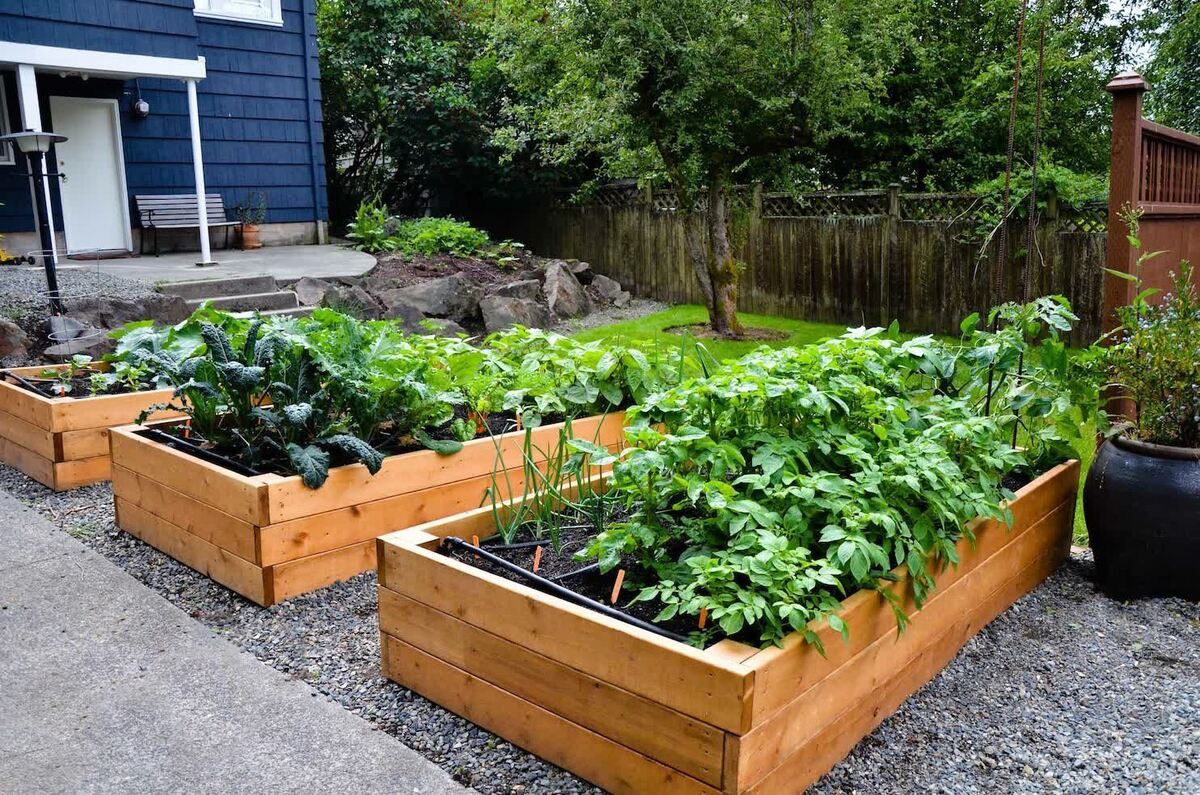
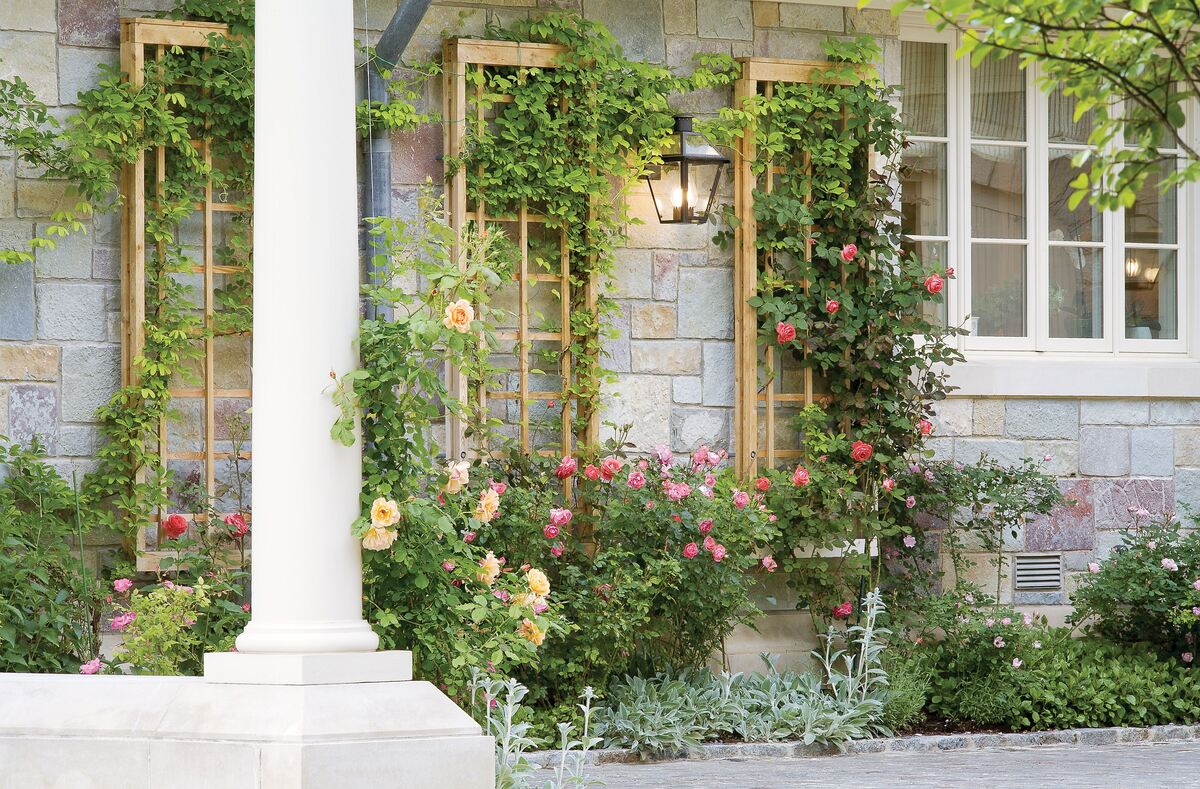

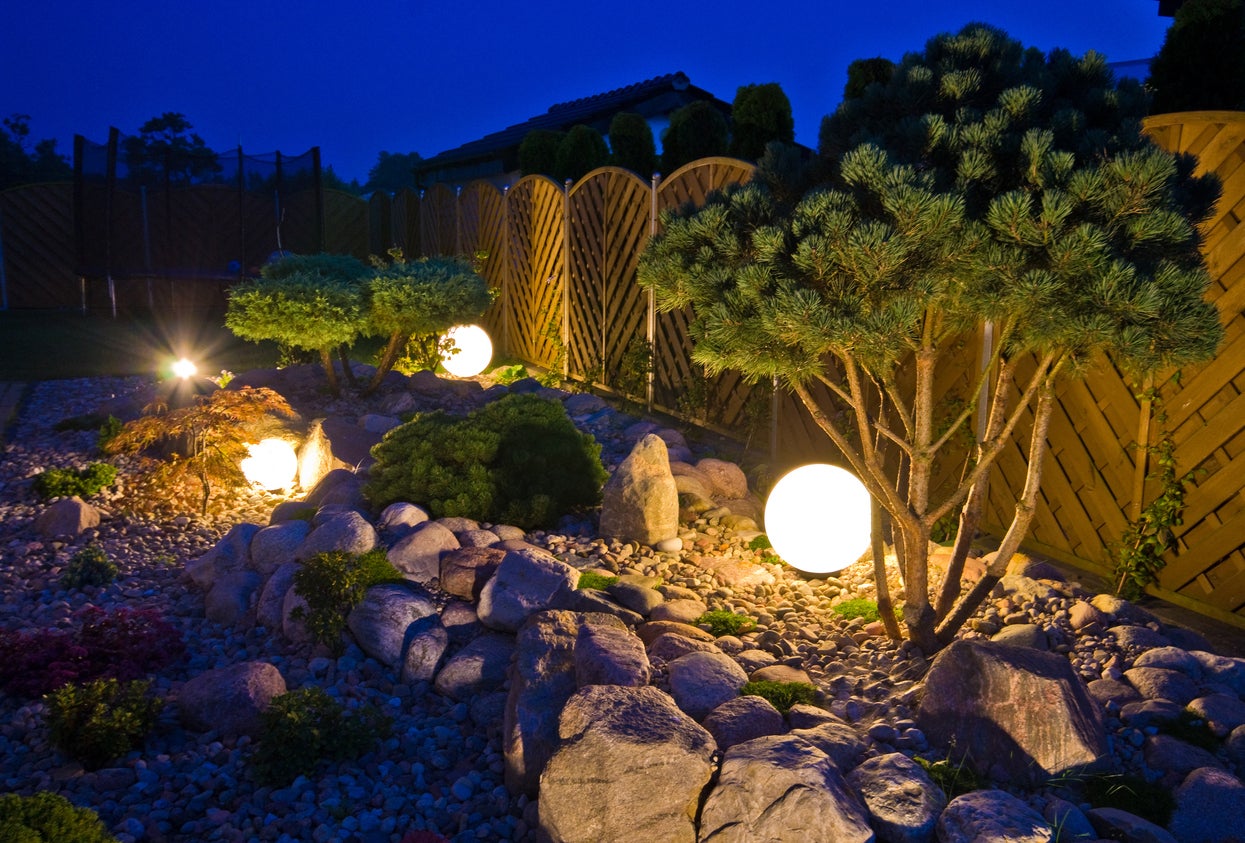

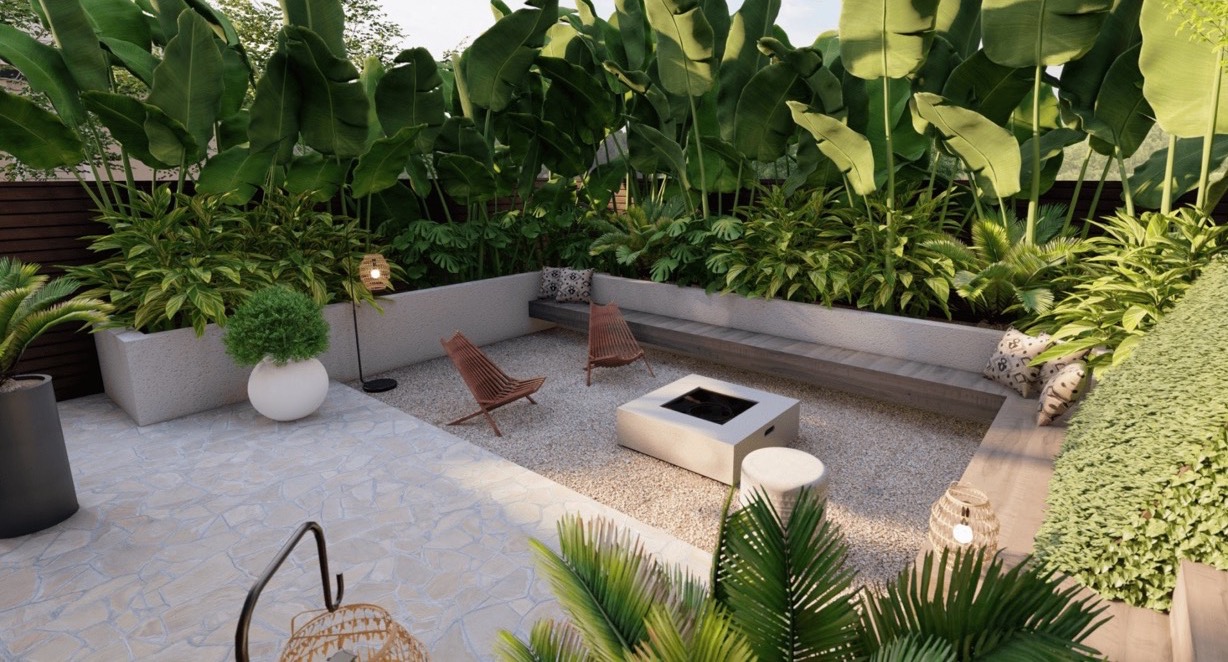
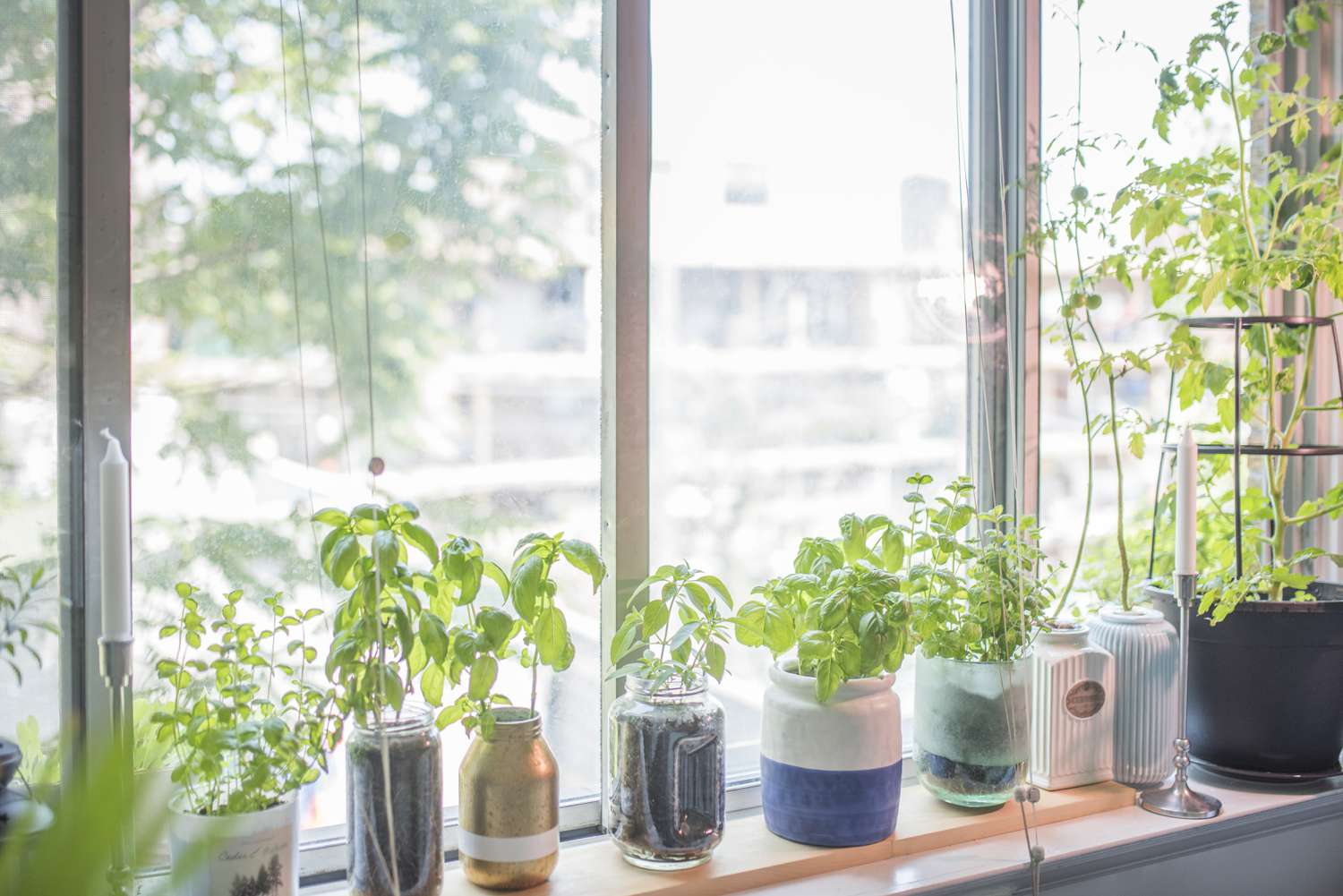

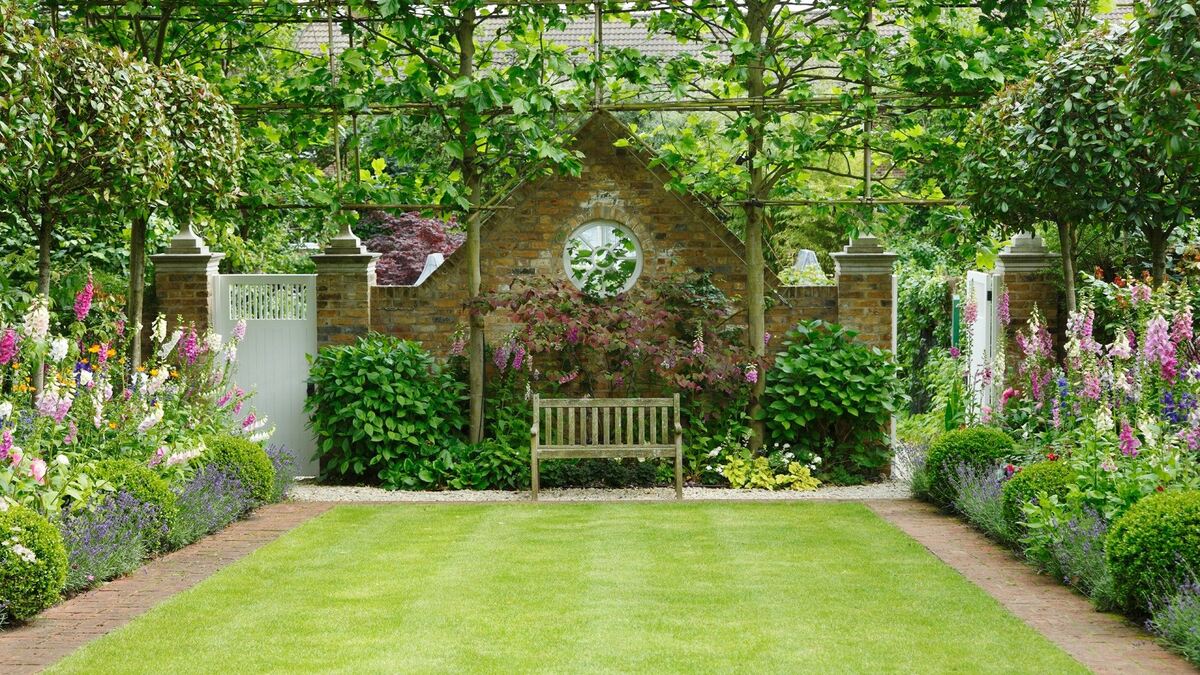

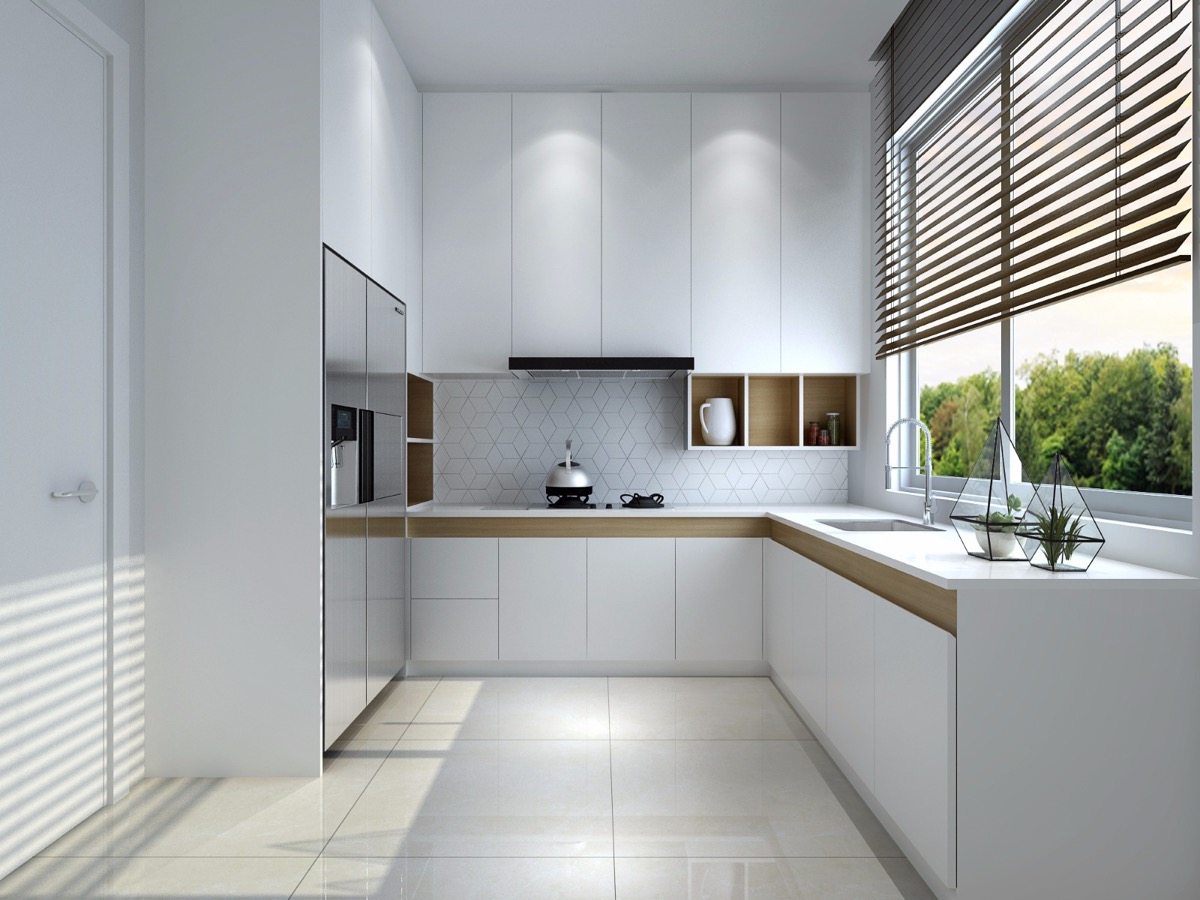

0 thoughts on “Vegetable Garden Trellis Ideas: 18 Ways To Max Your Harvest”